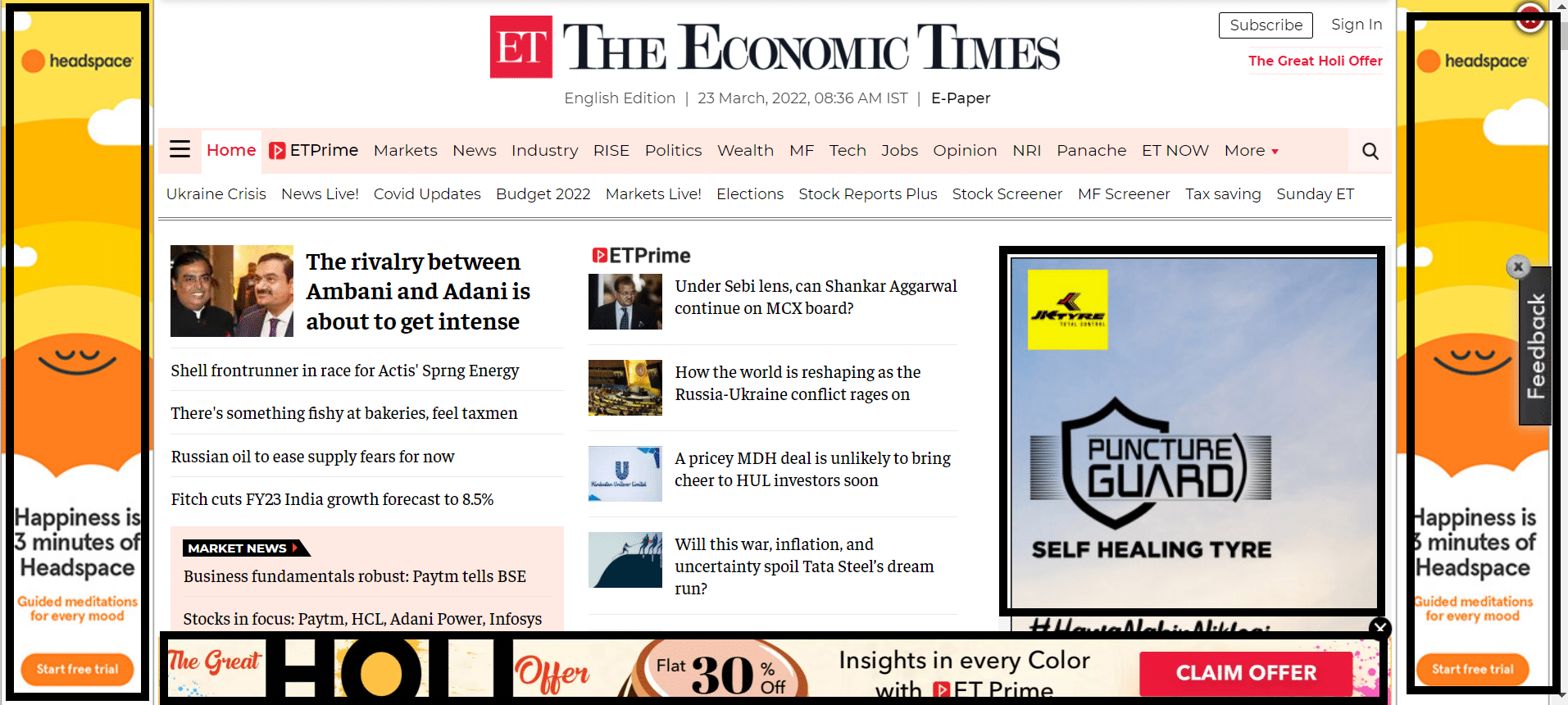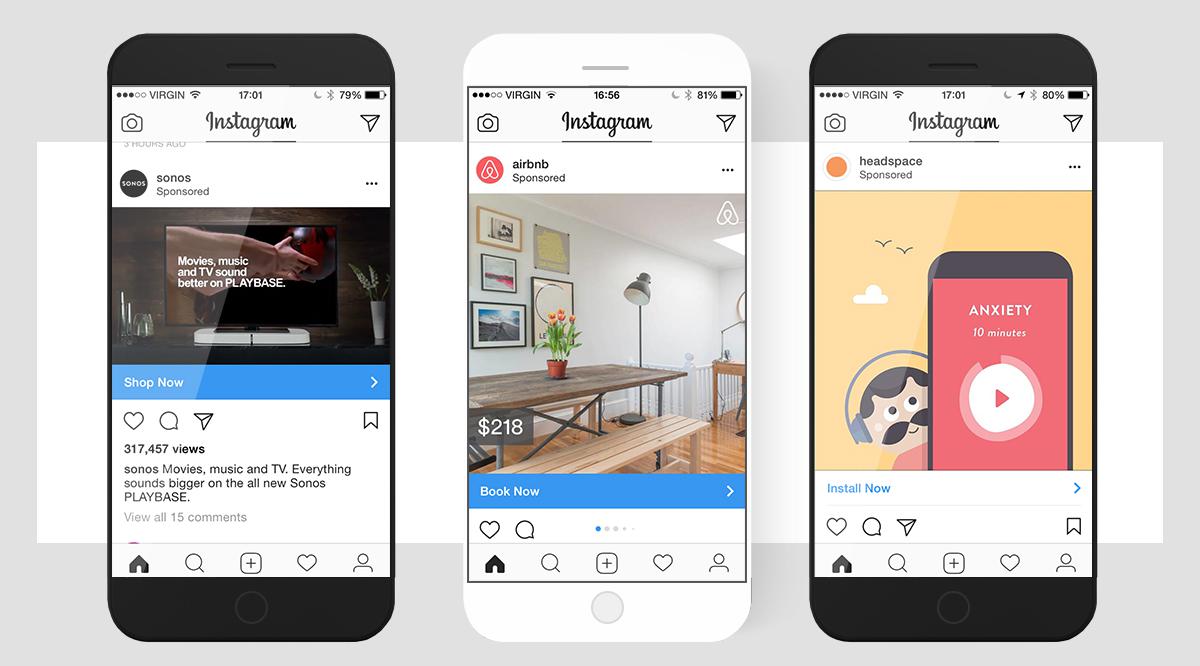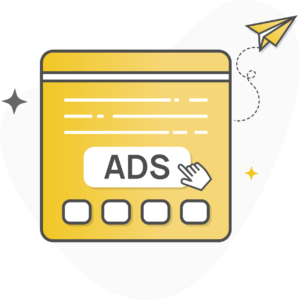Introduction
Earlier chapters spoke in-depth about how to design a marketing communication. The strategies and various elements in play have all been understood in detail. This chapter will take you through digital marketing, the future of marketing communications.
The internet revolution has changed the way communication occurs. Be it advertisements or sales promotions, none can have a reach-in traditional method (like ad’s in newspapers or tv/radio) as found via the internet.
Humans spend most of their time connected as technology becomes more prevalent in our daily lives. Companies have to modify their messaging as well, and understanding what digital advertising is has become critical.
Statistics say that about 60% of the world’s population is interconnected via the internet. Marketers cannot ignore this number if they want to make their product or service a success.
What is digital marketing?
A company's use of digital platforms and channels to market and promote its brand, product, or service is known as digital marketing. Digital marketing is the fastest and newest method firms are employing to reach customers.
Digital Marketing includes promotional actions taken through web browsers, social media pages, blogs, apps, and any other kind of online communication.
Companies now have additional alternatives to interact with the market due to the digital transformations. The key objective has always remained the same, to be present where the public is.
The process of sending promotional content to users via various online and digital platforms is known as digital marketing. It uses social media, email, search engines, mobile apps, affiliate programmes, and websites to reach audiences with adverts and messaging.
Elucidating digital marketing
In the earlier section, we saw what digital marketing entails. In this section I will broadly talk about two things: how is digital marketing different from traditional marketing and what can be strategies for digital marketing
Digital marketing is a two-way communication and the interactive element of it is the first difference between traditional marketing communication and digital marketing communication. Digital marketing makes communications easier.
The efficiency with which customers can be targeted is more refined in digital marketing as compared to traditional marketing. Digital marketing can better understand the behavioural psyche of the customer and tailor-make the content relevant for the individual.
Digital Marketing provides for real-time monitoring of results. The outcome of the campaign is known right away and not like that of traditional marketing wherein organisations needed to wait for months to know if the campaign has been successful or not.
In a nutshell, these are the two main differences between traditional marketing communication and digital marketing communication.
Strategies to design a digital marketing communication is very much similar to what has been explained in the earlier chapter. One added piece of information to be kept in mind while strategizing is that different digital channels might need a different approach.
The next section talks about what the popular digital marketing channels are
Various forms of Digital Marketing Channels
There are four major digital marketing channels in usage today. Let us see what they are in detail.
Search Engine Marketing
In the earlier chapter, I spoke about the vast number of people using the internet today and the use of search engines such as Google, Yahoo, Bing, Safari etc has been seen to increase day-by-day.
To put in simple terms few advertisements appear at the top of the Search Engine Results Page (SERP) when searching on Google or Bing. These advertisements are the product of search engine optimization.
Its one of the most common channels of digital marketing communication and the rise of search engines can be attributed to its popularity. There are two popular methods of content getting displayed on search engines.
- Organic Traffic Generation: Popularly known as Search Engine Optimisation (SEO) it is a technique to generate organic traffic. The page can stand out and rank among the top search engine results due to a combination of link development, keyword definition, and high-quality content that is relevant to visitors.
This method is relatively low cost and has high returns as it focuses on long term presence on the first pages of search engines.
- Pay-Per-Click (PPC) Advertising: PPC advertising allows advertisers to reach Internet viewers via paid advertisements across a variety of digital venues. PPC campaigns could be set up on popular search engines and social media applications to show advertising to those searching for terms related to the items or services.
This method is relatively low cost and has high returns as it focuses on long term presence on the first pages of search engines.
Website Advertising (Display advertising)
Using the display involves creating visuals and text to grab the user's attention, it is closer to traditional advertising. The most typical way is to use banner ads and ad spots on websites tailored to the target audience.
A clear understanding of this can be comprehended by the screengrab of a website shown below.

The highlighted banners and ad spaces is the slot allocated by the popular news daily website. Marketers can approach websites, pay for the space and post their advertisements in that area and this is known as website advertising or display advertising.
Email Marketing
The act of sending a commercial message via email, usually to a group of people, is known as email marketing. Every email sent to a potential or current customer could be considered email marketing in the wider definition. It entails sending advertisements, soliciting business, or soliciting purchases or donations by email.
Email marketing as a part of digital marketing is a double-edged sword. While current customers will have a high chance of engagement with such a form of messaging, there runs a risk of potential customers dismissing it as spam.
Social Media Marketing
The use of social media platforms and websites to advertise a product or service is known as social media marketing. Often these social media platforms have data analytics tools built-in, enabling businesses to track ad campaign progress, performance, and engagement.
You might have encountered sponsored posts on various social media applications such as Facebook, Twitter etc., which are examples of social media marketing. With most people spending a lot of time on social media apps this form of marketing has taken the front seat.
A snap of Social media marketing can be as seen here:

These are a few of the most popular forms of digital marketing communications. These encompass a whole range of subsets of forms but in essence, these are the four major forms of digital marketing communication.
Challenges in Managing Digital Communications
I will now talk about various challenges which can be faced while managing these various forms of digital marketing methods. Some of them are
Because receivers are continually flooded with rival ads, capturing their attention is becoming more challenging.
Marketers are finding it increasingly difficult to analyse the massive amounts of data they collect and then use that data to create new marketing campaigns.
Channels are continually increasing, and digital marketers must keep up with how they work, how consumers use those channels, and how to utilise them to effectively sell their products or services.
Marketers need to stay up-to-date with rapid changes and new trends.
Ad-blocker software is restricting the reach via digital mediums
These are the most challenging tasks marketers face while managing digital marketing communications. Next, I will walk you through some key concepts and terms that a marketing professional might face while designing and managing digital communications.
Terms and Concepts encountered in Digital Marketing
These are a few terms one might come across that deal with digital marketing. Let me walk you through them.
- Reach and Impression: The term 'reach' refers to the number of people who were able to see your advertisement and the number of times your ad was displayed is referred to as impressions. Simply put reach refers to the unique customers who viewed your content and impressions refer to the number of times such content was viewed
- Click-through ratio (CTR): The number of clicks that your ad receives divided by the number of times your ad is shown. If the ad gets 5 clicks for 100 impressions then CTR is 5/100. It is a very useful metric to judge the effectiveness of a campaign compared to the previous ones.
- Conversion: The number of people who completed the intended action after clicking through the advertisement is known as conversion.
- Cost-per-acquisition: Calculates the total cost of acquiring a paying customer.
Conclusion
This brings us to the conclusion of the topic of managing digital marketing communications. In the next chapter, we will look at some popular advertisements and analyse them in depth.

